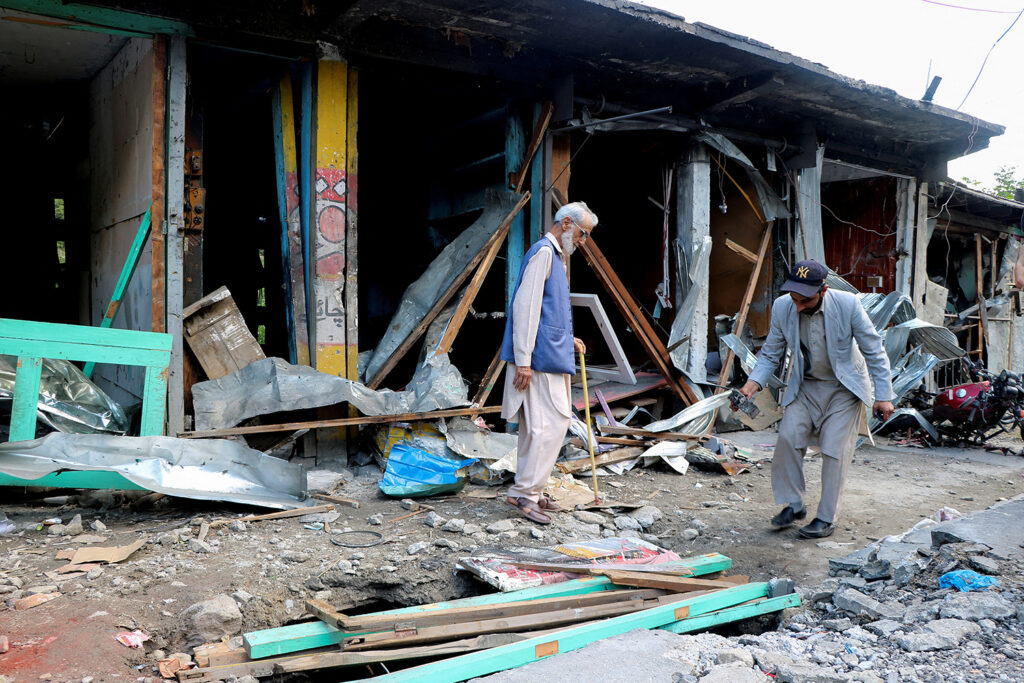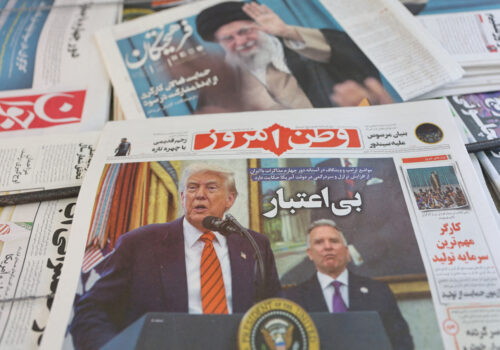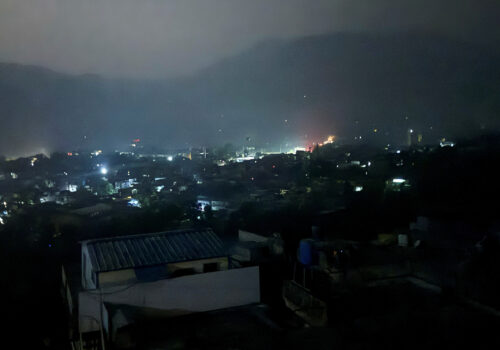The India-Pakistan crisis, which severely escalated last week, serves as a critical lesson for the United States’ nuclear negotiations with Iran.
This showdown between countries that each possess approximately 170 nuclear warheads has been fueled by decades-long disputes over Kashmir and historical enmity. It unfolded following a terrorist attack on April 22 that killed twenty-six, mostly Indian civilians. India attributed the attack to Pakistan-based militants and last week responded with drone strikes, missile exchanges, and a significant airstrike on Pakistan’s Nur Khan air base, raising Pakistani fears that India would launch a decapitation strike on its nuclear command.
On May 8, US Vice President JD Vance asserted that the conflict was “fundamentally none of our business.” But then the United States received an intelligence briefing on Friday, one that likely highlighted grave developments such as, potentially, intercepted communications or troop mobilizations. Within twenty-four hours, Vance and Secretary of State Marco Rubio were compelled by a fear that the crisis could go nuclear to engage directly with Indian Prime Minister Narendra Modi and Pakistani leaders to secure a cease-fire. India and Pakistan agreed to that cease-fire on Saturday, although both sides have since issued accusations that the truce had been violated.
This rapid shift from Vance’s isolationist rhetoric to high-stakes diplomacy demonstrates the global stakes of nuclear crises and the impossibility of dismissing them as regional concerns. A nuclear exchange would devastate any region, disrupt trade routes, spike energy prices, and generate millions of refugees, overwhelming international systems. Radioactive fallout would pose environmental risks far beyond the countries involved, directly impacting US economic and security interests.
Those stakes are why the United States must prevent Iran’s regime from retaining the technological capability to develop nuclear weapons. Allowing Tehran such capabilities risks replicating the perilous dynamics of the South Asian nuclear standoff, with profound global consequences.
Vance’s initial claim that the conflict was “none of our business” ignored these consequences, but the crisis’s rapid escalation forced US action. The Iran nuclear negotiations must internalize this lesson.
Tehran’s regime, with its history of supporting proxy groups such as Hezbollah and the Houthis, has demonstrated a propensity for destabilization, as seen in the 2019 Aramco attack. If Iran retains the technological infrastructure for nuclear weapons, it could leverage the threat of weaponization to escalate regional aggression or actively work clandestinely to develop a weapon, creating a crisis that, like India and Pakistan’s, becomes a global liability.
The South Asian crisis also illustrates how nuclear technology can embolden provocative behavior under the guise of deterrence. India’s retaliation for the April 22 attack, which it blamed on Pakistan, and Pakistan’s counterstrikes reflect a cycle of escalation enabled by mutual nuclear capabilities. Despite Vance’s hope that the conflict would not “spiral into a broader regional war or, God forbid, a nuclear conflict,” the rapid deterioration necessitated US intervention.
Iran poses an even greater risk. With nuclear technology, Tehran could intensify proxy operations—Hezbollah targeting Israel or the Houthis disrupting Red Sea shipping—confident that its potential nuclear arsenal deters retaliation. This could spark a regional arms race, with Saudi Arabia and others pursuing nuclear capabilities, heightening the risk of miscalculation.
The India-Pakistan experience highlights the challenges of managing nuclear-armed states. Decades of diplomacy have failed to resolve their tensions, as mutual distrust and nuclear arsenals perpetuate a fragile stalemate. Iran’s history of evading International Atomic Energy Agency oversight and prolonging negotiations, as seen with the 2015 Joint Comprehensive Plan of Action, suggests similar challenges. The United States must pursue a stringent approach in the negotiations that lie ahead, demanding that Iran dismantle its nuclear weaponization infrastructure, backed by robust verification, sustained sanctions, and a credible military deterrent.
The latest India-Pakistan crisis, triggered by a terrorist attack and propelled to the brink of nuclear conflict, forced Vance to abandon his “none of our business” posture and engage urgently to avert catastrophe. Like it or not, Washington carries a heavy burden in these crises, and that’s why it must ensure Iran cannot develop nuclear weapons—before it’s too late.
Alex Plitsas is a nonresident senior fellow with the Scowcroft Middle East Security Initiative at the Atlantic Council’s Middle East programs. He leads the initiative’s Counterterrorism Project. He is currently a principal and industry director at Providence Consulting Group for aerospace, defense, and high-tech electronics.
Further reading
Mon, May 12, 2025
From A to F, here’s how to grade a possible nuclear deal with Iran
New Atlanticist By Jonathan Panikoff
Trump may well be on his way to getting a deal with Iran over its nuclear program. But whether it passes the test will depend on its details.
Sat, May 10, 2025
Experts react: India and Pakistan have agreed to a shaky cease-fire. Where does the region go from here?
New Atlanticist By
With the fog of war still hovering over South Asia, Atlantic Council experts explore what's to come.
Tue, May 6, 2025
Experts react: India just launched airstrikes against Pakistan. What’s next?
New Atlanticist By
Atlantic Council experts share insights on India's missile strikes on Pakistan, which came two weeks after a terrorist attack targeting Indians in Pahalgam.
Image: Residents assess the damage of their shops after they were hit in an Indian strike, following the ceasefire announcement between India and Pakistan, in Jura village in Neelum Valley in Pakistani Kashmir on May 12, 2025. Photo via REUTERS/Stringer.




